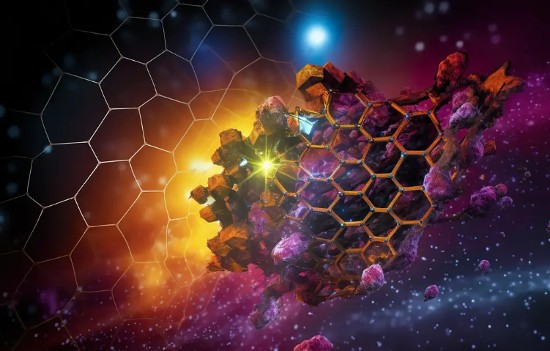The James Webb Space Telescope (JWST) resides approximately 1.5 million kilometres (about a million miles) from Earth and orbits the Sun. It is an infrared observatory that sees further into the Universe and back in time continuously giving us discoveries. One of these occurred when the JWST looked at the Orion Nebula, approximately 1,350 light-years from Earth.
While studying a protoplanetary disk it detected some interesting molecular chemistry – the precursor molecules needed to produce proteins and DNA. In other words, the JWST found the seeds of life circling a star far from our Solar
System.
The question of life originating in space has been argued for millennia. In the Western World, the first to propose life coming from space was the Greek philosopher, Anaxagoras, who almost 2,500 years ago hypothesized that the elemental stuff found among the stars bore the seeds of life. Even before Anaxagoras, Buddhist and Vedic philosophers expressed similar arguments.
The idea was revived in the 20th century, first by Svante Arrhenius in 1903. Today, Arrhenius is better remembered for his observations about increased carbon dioxide (CO2) in the atmosphere leading to climate change. He didn’t win much favour with the scientific community about climate change or his theory of life’s origins.
Another proponent of life from space was Fred Hoyle, a 20th-century British astronomer who proposed a theory called stellar nucleosynthesis. Later on, the name changed to panspermia.
I was a big fan of Hoyle as a young man interested in astronomy. I had several telescopes and was a member of the Royal Astronomical Society. I read Hoyle’s books about the origins of the Universe and later the origins of life. Hoyle believed in a steady-state theory of the Universe which was disproved by later observations supporting today’s inflationary model beginning with the Big Bang.
But Hoyle’s stellar nucleosynthesis may in the end prove to be right. He hypothesized that the Ort Cloud, sitting at the outer edge of our Solar System, was the likely source of life here. The Cloud, consisting of tens of thousands of small bodies circling our Sun in orbits lasting tens of thousands of years, is largely a carbon nursery where one can identify organic compounds that are almost indistinguishable from primitive bacteria. Disturbances within the Cloud that caused orbital changes, Hoyle believed, produced the comets that hurled themselves into the Inner Solar System. These comets, largely made up of carbon compounds and water ice rained down on the early Earth over 4 billion years ago. Many scientists today believe that the water in Earth’s oceans came from this cometary bombardment.
So how did the Ort Cloud become the nursery for life? Based on the JWST observations, the Ort Cloud was seeded from interstellar space. The protoplanetary disk circling a red dwarf star within the Orion Nebula could be one of billions of seeds of life nurseries producing carbon-based molecules. In this case, the JWST found a molecular compound called methyl cation (CH3+). It is deemed to be a significant building block for life’s origins because CH3+ interacts with a wide range of carbon molecules to create increasing complexity. Among those complex molecules could be the precursors of RNA and DNA. Previous to the JWST discovery, CH3+ had only been observed within the Solar System.
















